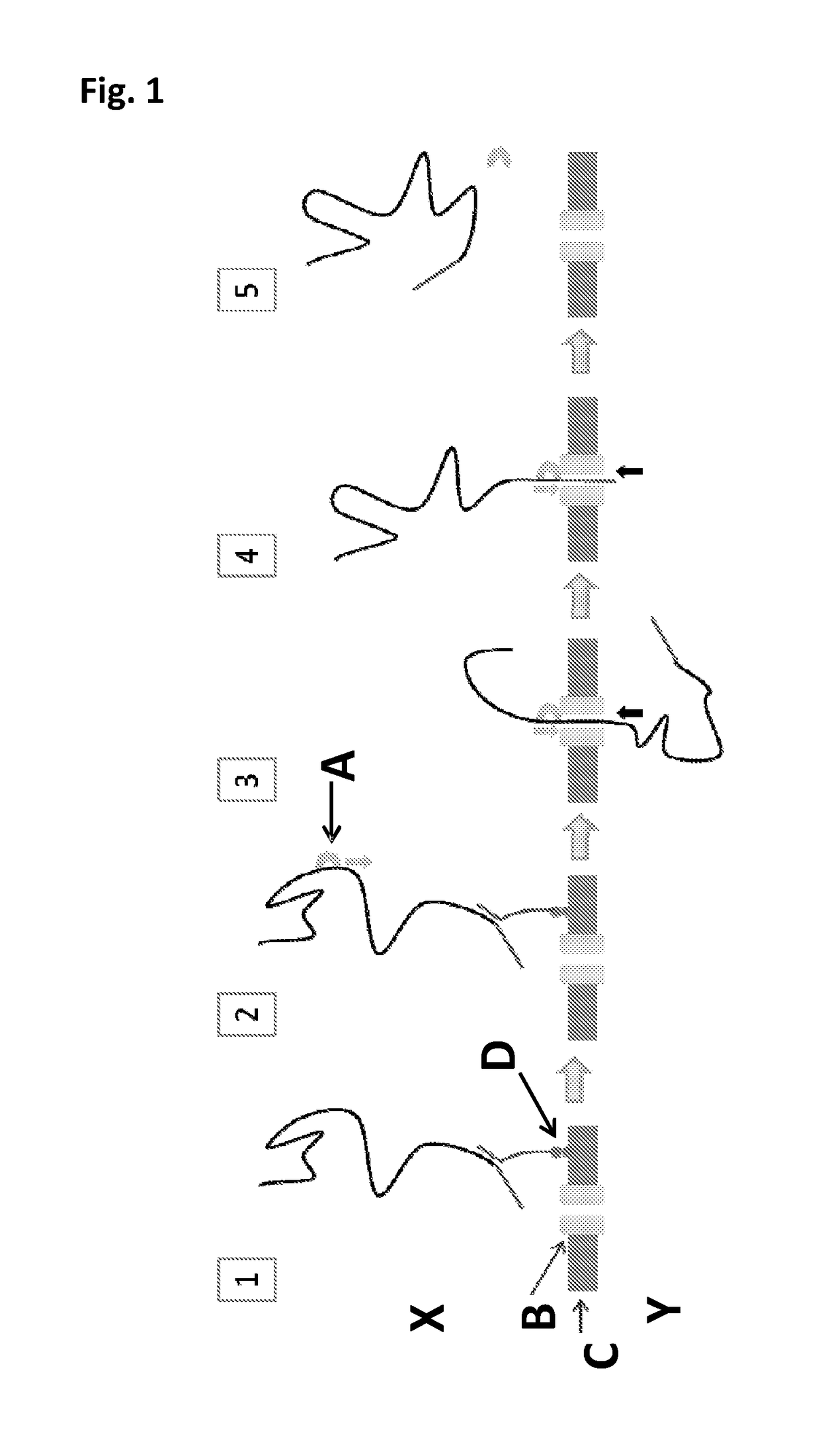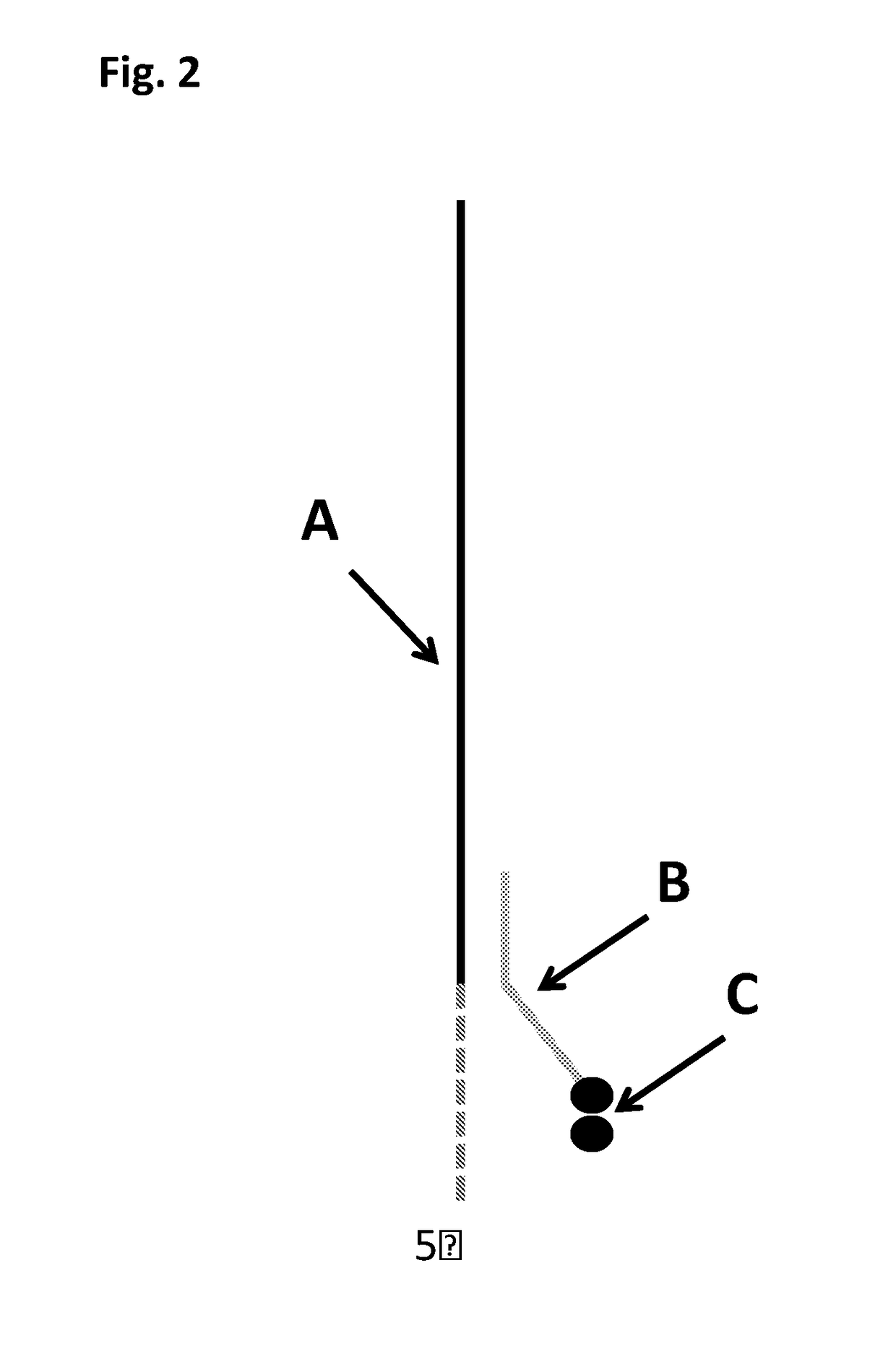Mutant lysenin pores
a technology of lysenin and pores, applied in the field of lysenin mutant forms, can solve the problems of difficult direct relationship between observed current and polynucleotide, high variance of current state, and slow and expensive existing technologies, so as to improve the ability of monomer, improve the ability to interact, and improve the ability to estimate characteristics
- Summary
- Abstract
- Description
- Claims
- Application Information
AI Technical Summary
Benefits of technology
Problems solved by technology
Method used
Image
Examples
example 1
uction
DNA Synthesis
[0377]The polypeptide for lysenin was synthesised at GenScript USA Inc. and cloned into a pT7 vector using NdeI and HindIII restriction sites. Codon for Met (ATG) was placed at the beginning of the DNA for expression purposes and two stop codons (TAA TGA) were placed at the end of the DNA to terminate translation.
Protein Expression and Oligomerisation
[0378]Protein was generated by coupled in vitro transcription and translation (IVTT) using an E. coli T7-S30 extract system for circular DNA. Protein was expressed in the presence of sphingomyelin (SM) containing lipid vesicles to facilitate oligomerisation upon expression of monomers units. To prepare SM vesicles, 0.5 mL of 25 mg / mL stock solution of SM (Avanti Polar Lipids, Cat No. 860062C) in chloroform was left at 37° C. to evaporate off chloroform. Once chloroform has evaporated, 5 mL of TE buffer (10 mM Tris, 1 mM EDTA, pH 8.0) was added to the vial to solubilise lipids. Mixture was then vortexed for about 1 min...
example 2
[0381]This Example illustrates that it was possible to observe pore insertion of wild-type lysenin (SEQ ID NO: 2) nanopores into 1,2-diphytanoyl-glycero-3-phosphocholine lipid (DPhPC) bilayers. It was not possible to observe DNA capture events or any helicase controlled DNA movement under the experimental conditions tested. The general method and substrate employed throughout this Example is shown in FIG. 1 and described in the figure caption.
Materials and Methods
[0382]Primers were designed to amplify a ˜400 bp fragment of PhiX174. Each of the 5′-ends of these primers included a 50 nucleotide non-complementary region, either a homopolymeric stretch or repeating units of 10 nucleotide homopolymeric sections. In addition, the 5′-end of the forward primer was “capped” to include four 2′-O-Methyl-Uracil (mU) nucleotides and the 5′-end of the reverse primer was chemically phosphorylated. These primer modifications then allow for the controlled digestion of predominantly only the antisens...
example 3
[0387]This Example illustrates the use of a Hel308 helicase (Hel308 MBu, SEQ ID NO: 15) to control the movement of intact DNA strands through a mutant lysenin nanopore (Lys-E84D / E85K, SEQ ID NO: 2 with the mutations E84D / E85K). The general method and substrate employed throughout this Example is shown in FIG. 1 and described in the figure caption.
[0388]Electrical measurements were acquired as described in Example 2. After achieving a single lysenin-E84D / E85K (SEQ ID NO: 2 with the mutations E84D / E85K) pore in the bilayer under buffered conditions (625 mM KCl, 100 mM Hepes pH 8.0, 75 mM potassium ferrocyanide(II), 25 mM potassium ferricyanide(III)), MgCl2 (10 mM) was added to the cis compartment and a control was run at +120 mV for 5 mins. DNA polynucleotide (SEQ ID NO: 13 and 14) and Hel308 Mbu (SEQ ID NO: 15) were added to 50 μL of buffer (625 mM KCl, 100 mM Hepes pH 8.0, 75 mM potassium ferrocyanide(II), 25 mM potassium ferricyanide(III), 10 mM MgCl2) and pre-incubated for 5 mins ...
PUM
| Property | Measurement | Unit |
|---|---|---|
| open pore current | aaaaa | aaaaa |
| current | aaaaa | aaaaa |
| current | aaaaa | aaaaa |
Abstract
Description
Claims
Application Information
 Login to View More
Login to View More - R&D
- Intellectual Property
- Life Sciences
- Materials
- Tech Scout
- Unparalleled Data Quality
- Higher Quality Content
- 60% Fewer Hallucinations
Browse by: Latest US Patents, China's latest patents, Technical Efficacy Thesaurus, Application Domain, Technology Topic, Popular Technical Reports.
© 2025 PatSnap. All rights reserved.Legal|Privacy policy|Modern Slavery Act Transparency Statement|Sitemap|About US| Contact US: help@patsnap.com



